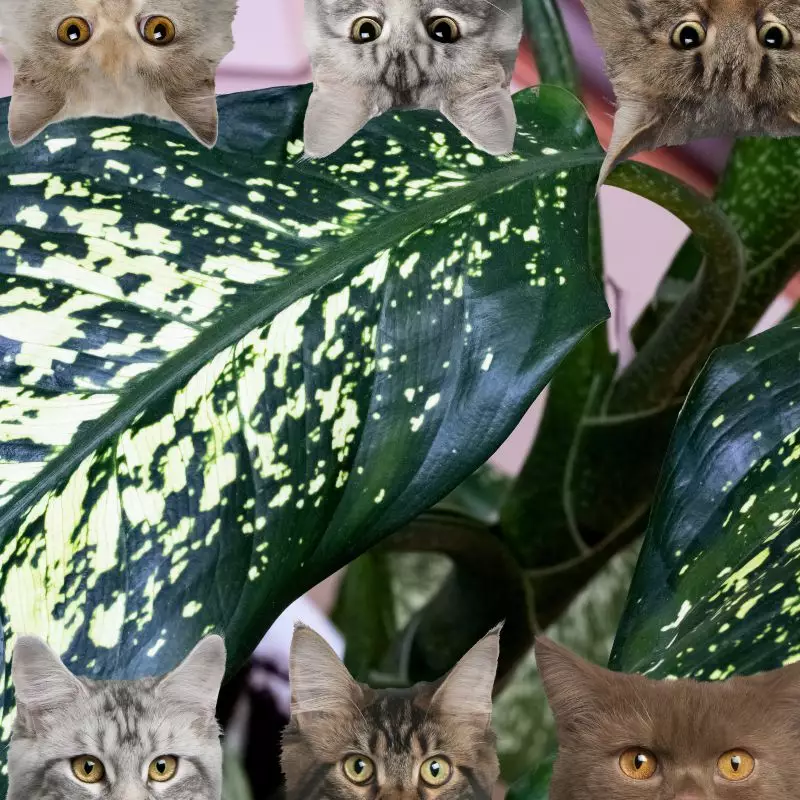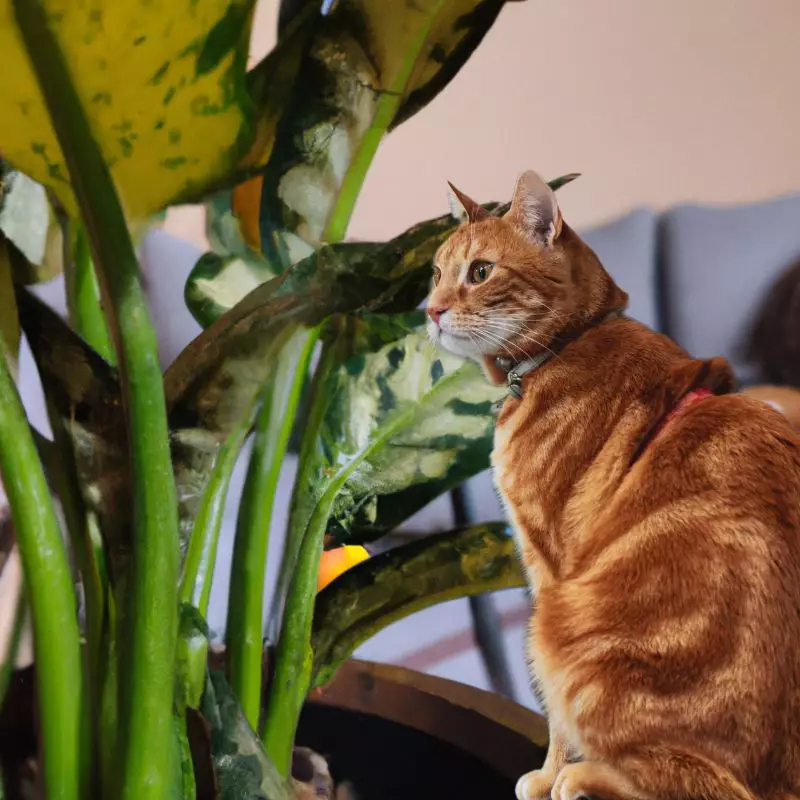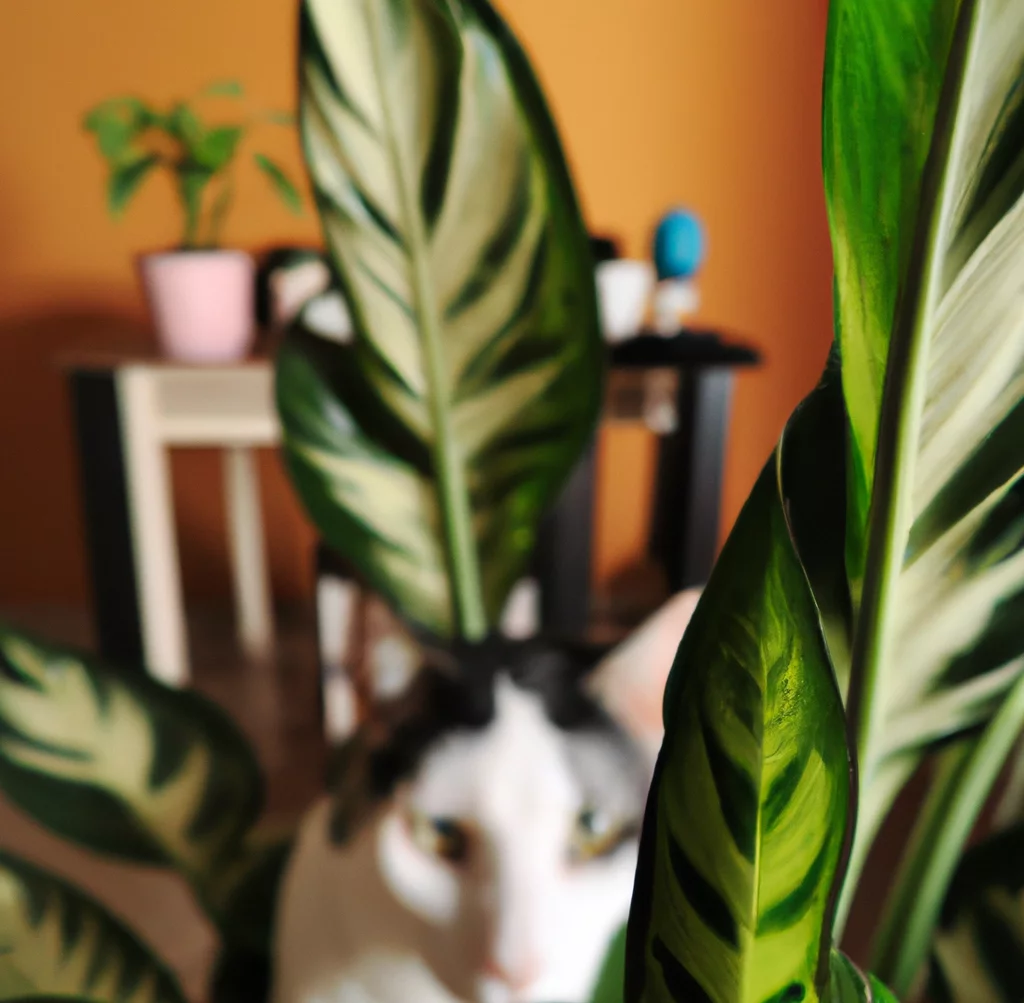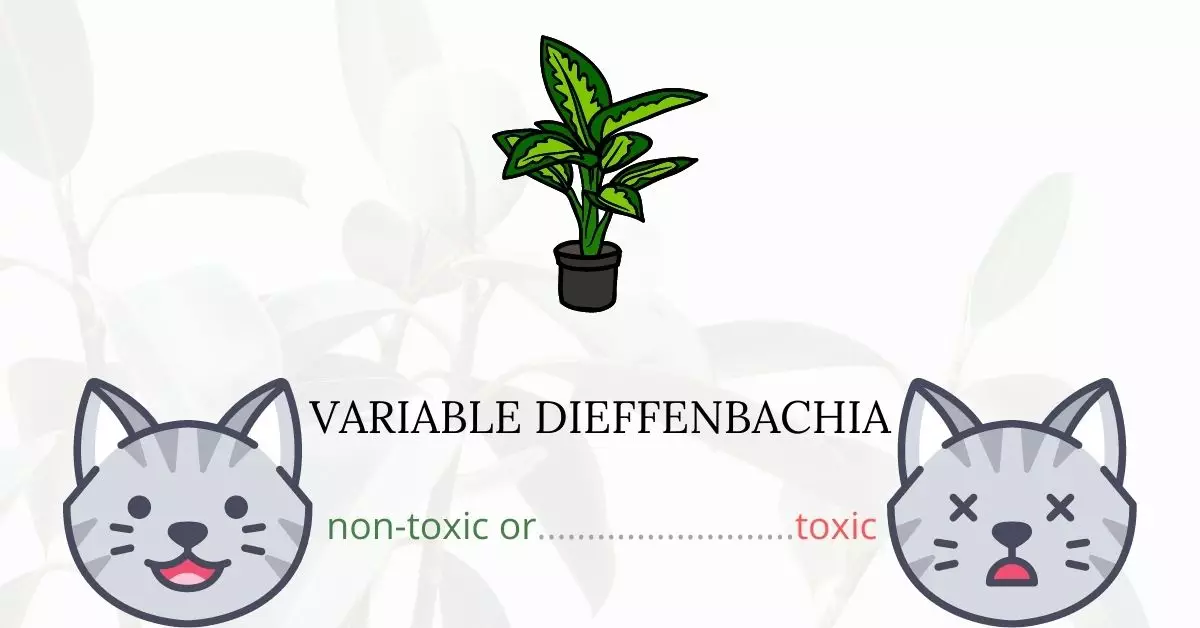Variable Dieffenbachia indeed poses a substantial risk to cats and is classified as toxic to them.
This article, collaboratively penned with a team of seasoned Doctors of Veterinary Medicine (DVMs), offers precise and current insights on the plausible hazards connected with Variable Dieffenbachia and its effects on felines. Their invaluable contributions empower us to share meticulous information, ensuring the safety and well-being of your pets. Additionally, we have fortified our findings through extensive research from high-authority sources like ASPCA and PetMD, guaranteeing the most reliable and up-to-date information on each plant under consideration.
The perilous components residing in Variable Dieffenbachia are insoluble calcium oxalate crystals, typically present in members of the Araceae family. When ingested by cats, these plants provoke an intense burning sensation in the mouth, lips, tongue, and throat, accompanied by excessive drooling, choking, and gagging. Furthermore, it can cause a significant enlargement of the throat, potentially leading to difficulties or an inability to swallow (dysphagia), posing grave health concerns.
Clinical Signs of Variable Dieffenbachia Poisoning in Cats

When cats come into contact, especially through ingestion, with the Variable Dieffenbachia plant, a series of clinical signs can manifest due to the plant’s toxic components, primarily insoluble calcium oxalate crystals. Below, each sign is detailed along with its underlying causes:
- Intense Burning Sensation: The contact or ingestion of the plant causes an immediate, painful burning sensation in the mouth, throat, lips, and tongue. This is due to the irritation of the mucous membranes by the insoluble calcium oxalate crystals present in the plant.
- Excessive Salivation: The burning and irritation lead to a profuse release of saliva as the body’s reflexive response to alleviate the discomfort and remove the irritating substance.
- Choking and Throat Swelling: The irritation and inflammation extend to the throat, causing swelling and a subsequent choking sensation, which is a direct response to the localized trauma caused by the plant’s toxic elements.
- Difficulty Swallowing or Dysphagia: The swelling and irritation in the throat can severely impair the cat’s ability to swallow, possibly leading to prolonged discomfort and nutritional challenges.
These clinical manifestations might persist for up to two weeks post-ingestion, demanding vigilant monitoring and appropriate veterinary intervention. If a cat consumes larger quantities of Variable Dieffenbachia, it can lead to more severe and possibly life-threatening complications, such as:
- Severe Gastrointestinal Distress: The toxic elements can severely disrupt the gastrointestinal system, inducing intense pain, vomiting, and diarrhea, as they continue to irritate the lining of the stomach and intestines.
- Extreme Difficulty Breathing: The swelling can potentially block the airway or cause significant respiratory distress, leading to labored, shallow, and rapid breaths (dyspnea). This condition requires immediate veterinary attention to prevent catastrophic respiratory failure.
Owners should be extremely cautious and promptly seek veterinary advice and intervention if any of these symptoms are observed, to ensure the well-being and swift recovery of their feline companions.
First Aid and Treatment of Variable Dieffenbachia Poisoning in Cats

In case your feline companion has ingested a part of variable dieffenbachia you should remove the plant from your cat’s mouth and thoroughly cleanse it with water. He or she can then be fed yogurt, milk, cheese, or any other calcium-containing food to alleviate discomfort by perhaps precipitating some of the calcium oxalate crystals.
If the cat is having more severe gastrointestinal distress, continuous vomiting, and diarrhea, it should be closely checked for symptoms of dehydration and given fluid treatment if necessary.
In situations when there is visible oral swelling, an antihistamine such as diphenhydramine may be administered to the cat. This will assist to reduce swelling, pain, and potential airway obstructions caused by the body’s inflammatory reaction.
Kapectolin may be administered to ease gastrointestinal distress. Kapectolin acts as a coating agent, protecting the stomach lining. Sucralfate can also be used to treat gastrointestinal discomfort because it combines with stomach acids to generate a paste-like substance that functions as a barrier between the stomach and its contents.
Recovery from Variable Dieffenbachia Poisoning in Cats

The cat will recover completely in the great majority of instances within 12 to 24 hours after consumption of the plant. Allow your cat to recover in a peaceful and comfortable environment at home.
Prevention of Variable Dieffenbachia Poisoning in Cats
Avoid growing variable dieffenbachia and other toxic plants at home. If you have one, be sure to remove it right away to prevent another poisoning episode. Keep your home cat-friendly and minimize your cat’s outdoor activities.
If you love plants but have cats at home, check out these lists:





